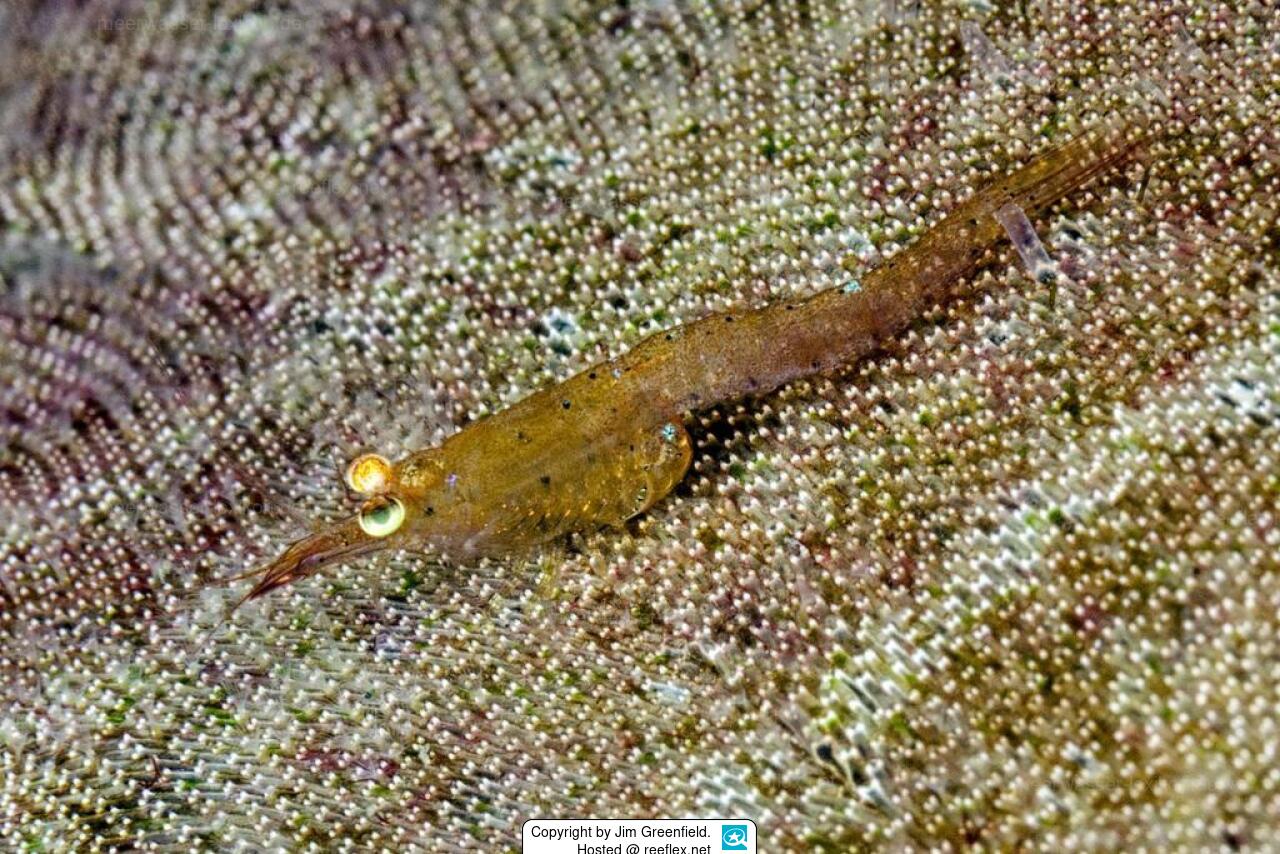Info
Neomysis integer is the predominant mysid crab species in the upper reaches of estuaries in Europe.
It also occurs in non-tidal lagoons, in isolated waters with almost fresh water and in hypersaline pools on the coast, but is rare in purely marine habitats.
Neomysis integer can form large schools of hundreds of specimens in their habitats.
Neomysis integer is a slender, free-swimming shrimp that grows up to 1.8 cm long, its body is almost transparent, with occasional brown pigmentation.
Mysisart has a well-developed carapace that protects the large, stalked eyes, head and thorax. The rostrum of the head is clearly pointed but short.
The antennae are conspicuous and bipartite (with an inner and an outer appendage), the outer appendage (exopodite) of the second pair of antennae has the shape of a flattened plate, the so-called antennal scale.
The antennal scale is lined with setae along its edge and is an important diagnostic feature.
The thoracic limbs are well developed and also bipartite, with the outer limbs having a distinctly feathered appearance.
The abdominal limbs are less developed and finger-shaped, with the exception of the last pair, which are bipartite and flattened and form the caudal fan (uropod).
Neomysis integer play an important role in the food chain, as many fish feed on the small shrimp.
Synonyms:
Mysis integer (Leach, 1814) · unaccepted
Mysis scoticus J.V. Thompson, 1828 · unaccepted
Mysis scotius J.V. Thompson, 1828 · unaccepted (misspelling)
Mysis vulgaris J.V. Thompson, 1828 · unaccepted (Synonym)
Neomysis vulgaris (J.V. Thompson, 1828) · unaccepted (synonym)
Praunus integer Leach, 1814 · unaccepted (Synonym)
It also occurs in non-tidal lagoons, in isolated waters with almost fresh water and in hypersaline pools on the coast, but is rare in purely marine habitats.
Neomysis integer can form large schools of hundreds of specimens in their habitats.
Neomysis integer is a slender, free-swimming shrimp that grows up to 1.8 cm long, its body is almost transparent, with occasional brown pigmentation.
Mysisart has a well-developed carapace that protects the large, stalked eyes, head and thorax. The rostrum of the head is clearly pointed but short.
The antennae are conspicuous and bipartite (with an inner and an outer appendage), the outer appendage (exopodite) of the second pair of antennae has the shape of a flattened plate, the so-called antennal scale.
The antennal scale is lined with setae along its edge and is an important diagnostic feature.
The thoracic limbs are well developed and also bipartite, with the outer limbs having a distinctly feathered appearance.
The abdominal limbs are less developed and finger-shaped, with the exception of the last pair, which are bipartite and flattened and form the caudal fan (uropod).
Neomysis integer play an important role in the food chain, as many fish feed on the small shrimp.
Synonyms:
Mysis integer (Leach, 1814) · unaccepted
Mysis scoticus J.V. Thompson, 1828 · unaccepted
Mysis scotius J.V. Thompson, 1828 · unaccepted (misspelling)
Mysis vulgaris J.V. Thompson, 1828 · unaccepted (Synonym)
Neomysis vulgaris (J.V. Thompson, 1828) · unaccepted (synonym)
Praunus integer Leach, 1814 · unaccepted (Synonym)







 Jim Greenfield, Großbritannien
Jim Greenfield, Großbritannien


